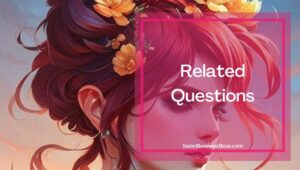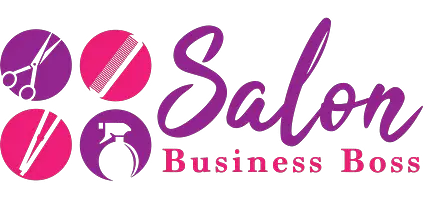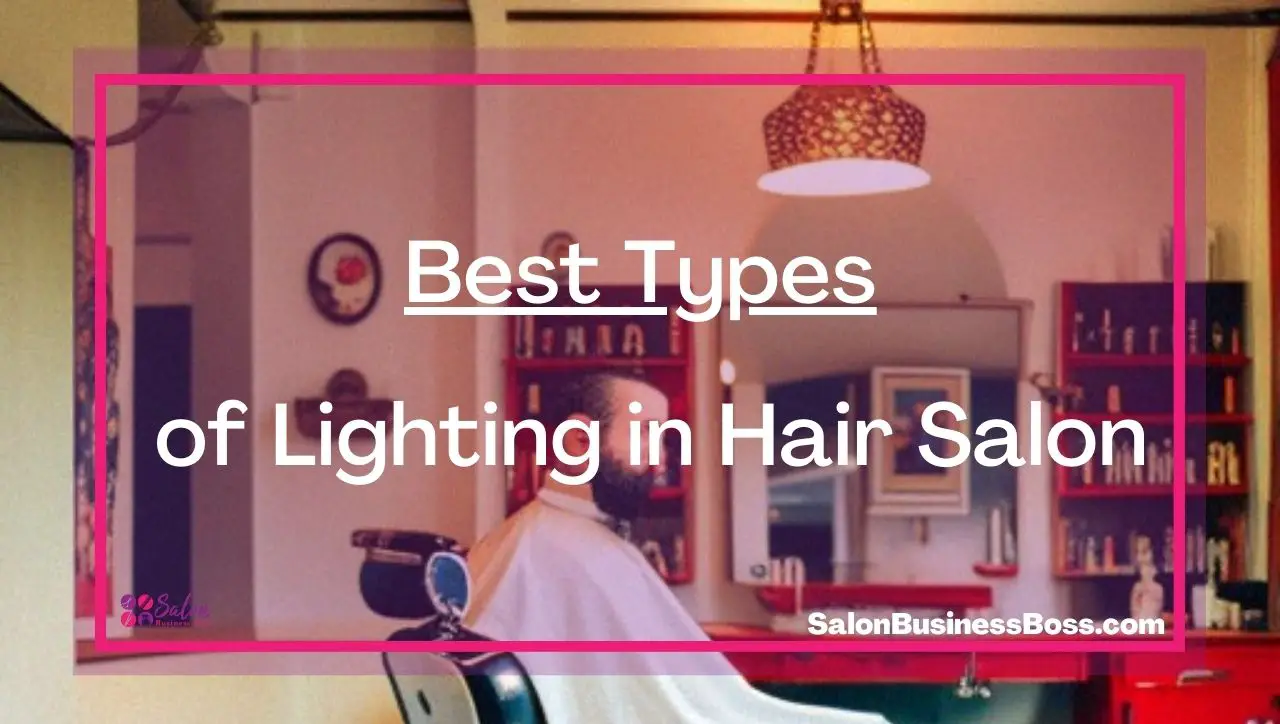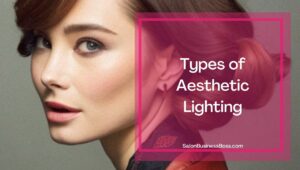Lighting in a hair salon needs to be purposeful. Colored gels and tinted bulbs may look great on a runway, but they perform incompetently in a salon. Stark white light like those in hospitals proves to be too harsh on the eyes and washes out natural colors. Hair salon lighting must illuminate a place of work and it shapes the mood of the shop.
The best types of lighting in a hair salon are ambient, appointed, and aesthetic. Ambient lighting utilizes or replicates the natural lighting of the outside indoors. Appointed lighting, often called task lighting, highlights areas of work to optimize visual acuteness and aesthetic lighting elicits emotional responses through the psychology of color temperature.
Lights used in a salon need to be best suited for hair color. Your goal as a stylist is to highlight one’s natural beauty. Creating the proper lighting scheme in your hair salon will ensure your customers walk out a masterpiece and not an aesthetic disaster.
3 Types of Salon Lighting
Developing a light scheme for your hair salon requires balance. It must fill the need for a well-lit reception area and workstations while maintaining warmth and relaxation. Hair salons use all three types of lighting to accomplish both harmonious visualization and a welcoming environment.
Ambient Lighting

Lighting in a hair salon begins with the general lighting of the space. Ideally, you want lots of natural sunlight pouring through floor-to-ceiling windows. Unfortunately, not every hair salon is housed in a building with that luxury.
Skylights would be the next best option for letting in the sun. These windows in the ceiling can be fixed to remain shut or opened for venting. But if you find yourself on the first floor of a double-decker mall, sunlight may be unattainable.
The ambient lighting of a hair salon typically relies on overhead light fixtures. This type of lighting was installed during the construction of the building. Changes in the number of fixtures or the type of light source may be in order to fit the needs of a hair salon.
How much lighting you need will depend on the size of the hair salon. The style of overhead fixtures ranges from large panels to small cans of recessed lighting. Below are the standard types of overhead light options.
Types of Overhead Light Fixtures
- Recessed
- Accents and Spotlights
- Flush Mounting
- Semi-flush Mounting
- Fixed Track Light
- Strip Lights
- LED Panels
Appointed Lighting
Task lighting is appointed to the task in need of illumination. Appointed lights help with seeing fine details. Being able to see clearly increases accuracy in whatever you’re doing in your hair salon.
Greeting customers and scheduling appointments require a well-lit workspace. Reception areas need extra light for tasks like writing down messages or entering data into the appointment calendar. Desk lamps or hanging pendants focus direct light where it’s needed most.
Bookkeeping and other office tasks are another space where your salon needs adequate lighting. A small lamp can put the spotlight on the important business at hand. If table surface area is limited, slender floor lamps can provide illumination without taking up valuable workspace.
Appointed lighting is essential at the workstations of each stylist. Large vanity bulbs line the mirror to reflect the most light. Having the right amount of light in a hair salon workstation ensures colors are mixed properly. It also guarantees that the hue of the hair looks right inside and outdoors.
Types of Appointed Lighting
- Pendant lights
- Desk lamp
- Multi-directional floor lamp
- Under-cabinet lights
- Track lights
Aesthetic Lighting
The final type of lighting used in a hair salon is purely decorative in nature. Aesthetic lighting is a way to add pops of color to a room. Often it is used as a way to highlight artwork on the walls or jazz up the waiting area.
Sometimes called accent lighting, aesthetic lighting provides minimal illumination overall. It is used to beautify an area rather than be purposeful like the other types of lighting. Aesthetic lighting is typically the last stage of planning your lighting scheme.
Aesthetic lighting focuses on the color temperature of the lights being used in the salon. Your hair salon needs warm colors to create a welcoming environment. By using strategically placed accent lighting, you can establish an inviting hair salon while maintaining properly lit work areas.
Types of Aesthetic Lighting
- Uplights

- Sconces
- Chandeliers
- Picture lights
- Art spotlights
Hair Salon Lighting Design
Now that you have an understanding of the types of lighting you need in your salon, it’s time to plot out where those lights need to go. Most hair salons have three areas that will need to be lit according to their function. These areas are the reception desk, the waiting area, and hairstylist workstations.
Salon Lighting for the Reception Desk
One of the most crucial areas in your hair salon is the reception desk. It is the first impression your customers get when they enter your business. The reception area is the landing zone where every customer starts their journey. More importantly, the reception desk is where appointments get booked and sales are made.
Your hair salon reception desk needs to be both welcoming with warm colors of light and functional. Hair salon employees will be more productive when the desk is properly lit to handle the data entry and messaging tasks. In addition, walk-in customers will be more apt to become long-term clients when greeted by an approachable reception area.
A hair salon’s reception desk needs both overhead lighting for customers to see where to go as well as task lighting. A pendant light directly over the desk can direct the illumination onto the workspace. Under-counter lights can be a great space-saving option. Meanwhile, dainty table lamps can be both aesthetic decor and purposeful task lighting.
Often located near the products for sale, a hair salon reception area is a multi-tasking station. A customer may be there to schedule a future appointment or purchase hair care products. In either case, they need a well-lit spot to see what they’re doing.
Learn what makes a salon “high end.”
Salon Lighting for Waiting Area
After checking in at the reception desk, a customer will likely be directed to the waiting area. In this section of your hair salon, lighting is geared towards emotion instead of function. The brightness is often a shade or two darker than the reception area to evoke a sense of relaxation.
Diffused lights can soften the room and create a soothing energy. The use of a complementary color scheme throughout the furnishings will add to the meditative environment. Aesthetic lighting, such as wall sconces, will accentuate the mood your hair salon is trying to achieve.
Overhead lighting of the waiting area gives customers the right amount of light to glance through the style magazine when choosing a look. You want the lighting in this area to be as close to natural light so that colors look accurate. But it doesn’t have to be as bright as the reception desk or work areas to be functional.
Avoid going too dark in the waiting area of your hair salon. Having a poorly lit waiting area could be hazardous if people can’t see well. And while you want customers to be relaxed, you certainly don’t want anyone falling asleep because of the darkness.
Salon Workstation Lighting Design

Proper lighting in the workstation areas of your salon is essential to your stylists. Diffused white light is ideal to reduce eye strain. It will provide the accurateness of natural lighting without the harshness of bright lights.
The important aspect to consider when developing the light scheme for this area is the casting of shadows. A hairstylist standing over their client will block light directed from the fixtures on the ceiling. Vanity lights around your workstation mirrors will alleviate much of this problem.
Reflective surfaces like the mirror will also help in redirecting light and reducing shadow. A hairstylist needs a well-lit workspace to help keep tools organized and easily accessible. Features such as lighted drawers and cabinets can highlight otherwise dark spaces.
Lights used in the hair salon workstations aid the stylist in doing their job accurately. Mixing colors, cutting hair, and styling all require good lighting. Customers need appropriate lighting in the salon to see how they’ll look even outside of the salon. Going too bright or too dark will have a significant impact on how hair color appears in the salon compared to natural lighting.
Related Questions about Salon Lighting

What’s the difference between watts and lumens?
Most people are more familiar with the wattage of the bulb in their fixture since this is how they are most commonly marketed. Lumens, on the other hand, is a term more familiar to people in the audio-visual industry. That is because lumens refer to the measurement of the light’s intensity while watts are the amount of electrical energy. Below is a chart showing the watts and lumens of everyday light bulbs.
| Type of bulb | 300+ lumens | 500+ lumens | 700+ lumens |
| LED | 4 watts | 6 watts | 9 watts |
| Incandescent | 40 watts | 60 watts | 75 watts |
How does color contamination affect the lighting in a hair salon?
When designing your hair salon, the color palette you choose has a significant impact on the lighting. Paint colors on the walls and ceiling should be neutral tones. Dark colors will absorb the light while too light will cause glares. Flooring can be mildly reflective but avoid white to reduce eye strain and dinginess that will stand out. Furniture has more flexibility in the waiting area but keeps a consistent color theme to create a relaxing motif.
Looking to start your own Salon? Get the documents you need to get organized and funded here.
Please note: This blog post is for educational purposes only and does not constitute legal advice. Please consult a legal expert to address your specific needs.

About the author. Entrepreneur and Salon Business Fan.
Hi! I am Shawn and I am a happy individual who happens to be an entrepreneur. I have owned several types of businesses in my life from a coffee shop to an import and export business to an online review business plus a few more and now I create online salon business resources for those interested in starting new ventures. It’s demanding work but I love it. I do it for those passionate about their business and their goals. That’s why when I meet a salon business owner, I see myself. I know how hard the struggle is to retain clients, find good employees and keep the business growing all while trying to stay competitive.
That’s why I created Salon Business Boss: I want to help salon business owners like you build a thriving business that brings you endless joy and supports your ideal lifestyle.


